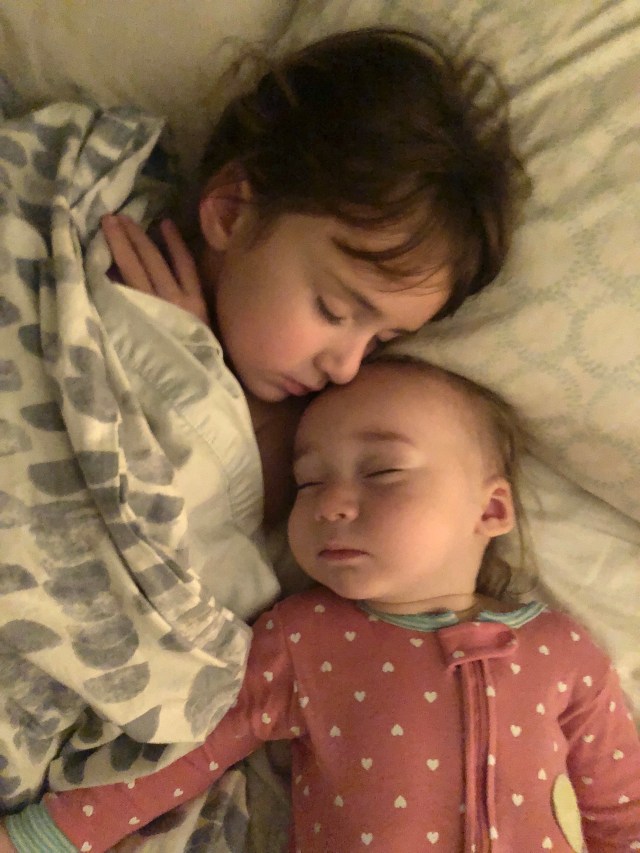We all want to offer our children a peaceful transition to sleep each night. But in real life, bedtime can feel anything but peaceful, as power struggles take over and leave everyone feeling irritated and disconnected instead.
It is possible to shift this dynamic and make bedtime a sweet spot of the day, but it takes some effort, mindful reflection, and a bit of time to adjust.
There’s no one way forward that’s perfect for every family, but there are some aspects of creating nighttime routines that we all can benefit from considering. As you find the ones that work best for your family, the benefits will be reduced nighttime anxiety, a greater sense of connection and, crucially, better sleep.
1. Shift Your Bedtime Goal to Prioritize Connection: At the end of the day, it’s normal to want to get our kids to sleep as fast as possible. But the paradox of peaceful sleep is that the stronger our “go to sleep” message is, the more desperately our kids work to stay awake! When kids go to bed, they are entering a period of disconnection. In order to feel good about that, they need their love well filled up. In fact, you may want to start calling bedtime family time or snuggle time instead.
2. Have a Portable Routine: Sleep has to happen in many places. Don’t set yourself and your kids up for stress with a routine that can only happen at home. Consider if there are aspects of what you do at bedtime that won’t travel well. If so, how can you shift them to accommodate nights you’re not at home.
3. Make a List, and Use it Playfully: Every parent has experienced the frustrating assortment of needs kids have when the lights go out. Take a pro-active approach and make a list of everything your kid needs before bed: pj’s, teeth brushed, potty, water, closet monster check, and anything else you can think of. Make two columns of checked boxes after each—one for “done” and another for “no thank you”. The “no thank you” column is great if one night your kid doesn’t need a monster check, or isn’t in the mood for hugs. Laminate your list, tie a crayon to it, and hang it up near your kid’s bed. Use it playfully like a scavenger hunt each night. It will teach your kids the valuable lesson of prior preparation while offering a routine that has both predictability and flexibility built-in.
4. Honor Fears and Work to Create Safety: Sleep is a vulnerable time. Kids naturally have fears around bedtime. Often our tendency is to minimize fears in an attempt to assuage them, but it doesn’t really work. After all, how can someone who doesn’t see the problem possibly help solve it! It’s more effective to listen, ask questions, and honor your child’s concerns. Then work together to create solutions. When my daughter started sleeping in her own room, she was afraid of the house catching fire. Saying “that’s not going to happen” was dismissive. Working together to create a fire safety map, letting her check the smoke detectors, and practicing setting them off and going through the emergency plan made her feel powerful and prepared instead.
5. Read For Engagement: I love reading. And yet at a certain point with my kids I noticed myself trying to make bedtime books as boring as possible. Seriously! I was trying to lull them to sleep like a bad hypnotist, and it sucked all the enjoyment out of one of our favorite activities. A better strategy is to read for engagement and connection. Read with curiosity, ask questions, encourage dialogue. The connection created as a result will help the child’s nervous system settle, and peaceful sleep will come much more easily.
6. Cultivate Gratitude: The human brain has a negativity bias. It’s great for surviving, but not so good for thriving. Bedtime is the perfect opportunity to reflect with our kids on what good is happening in their world. Ask them to linger over a good experience, describe what it felt like, hold it in their memory. This practice of “taking in the good” as Rick Hanson describes in “Hardwiring Happiness,” can help our brain re-orient to the world and counteract the negativity bias we are all born with. Doing this regularly can help ease bedtime worries.
7. Use a Body Scan to Move Into Rest: A body scan is a simple way to check in with our needs and invite our body to rest. When kids practice a body scan, it naturally builds self-awareness and helps them relate to and connect with their body in a healthy way. Start with the feet, thank each part of the body for the work it did that day, and invite it to rest. This is a great practice for adults too, and can be done anywhere!
8. Consider Staying a While: The idea that we need to teach our kids to sleep on their own makes a lot of parents feel guilty about staying in the room as their kids fall asleep. We don’t want our kids to need us so much that they can’t ever sleep without us. But there’s another way to think about this. What would it feel like for you to consider staying, not because they need you, but because you want to be with them? This doesn’t create a trap, or lock you into doing it every night, or send them a message that they can’t go to sleep on their own. It just shows them that you like them, and want to be near them when you can. Being wanted for who they are may be the deepest longing of your child’s heart. In the quiet time, when we have so many other things to do, choosing our kids over and over again, night after night, gives them an extraordinary gift. One that just may shape how they see themselves for a lifetime.











